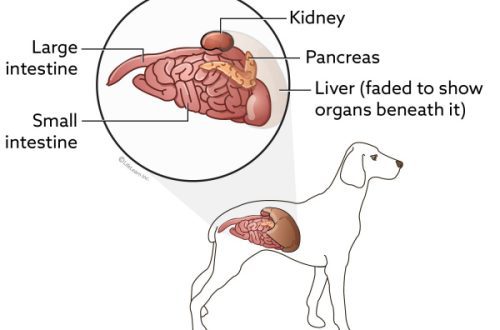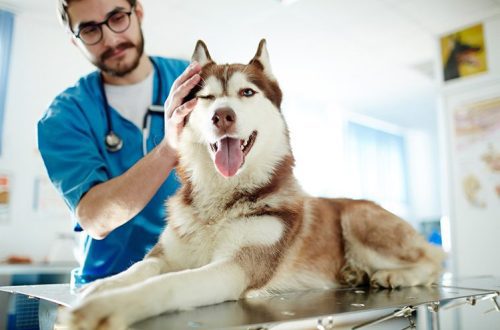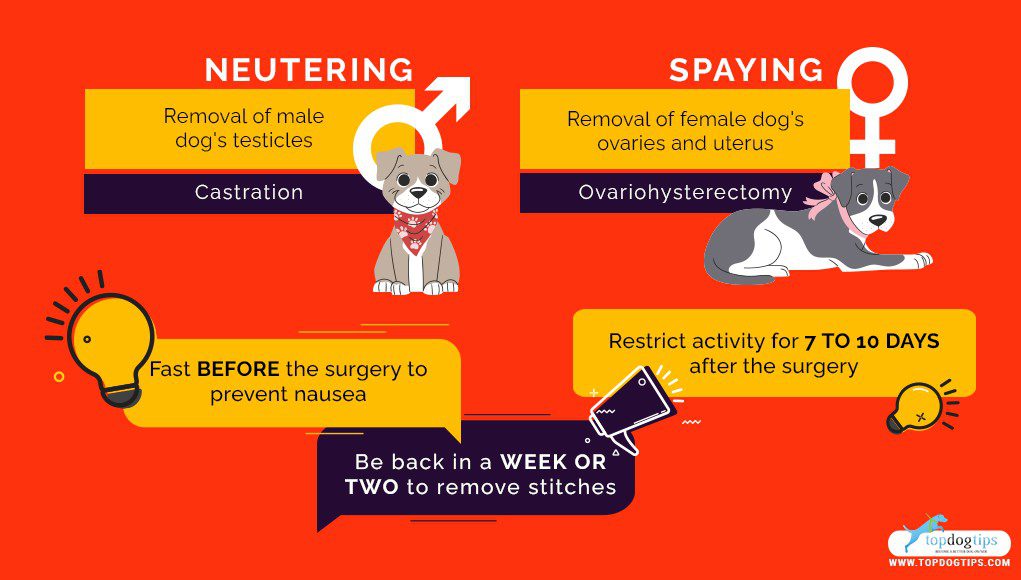
Castration of dogs: pros and cons

Male castration or sterilization? It is worth distinguishing between castration and sterilization. There is an opinion among the inhabitants that this is one and the same operation, only the name depends on the sex of the animal. In fact, this is not entirely true – or rather, completely false. If castration of dogs is the removal of the reproductive organs by surgery, then sterilization is also a surgical intervention, but with the aim of stopping the ability to reproduce while preserving the reproductive organs.
What exactly to conduct, the owner of the dog decides on his own. Since the operation does not reverse, it is necessary to take into account all risk factors, weigh all the pros and cons of castrating a dog. Understanding the nuances, the owner must understand when it is better to castrate the dog, whether it is possible to castrate the puppy and how many months. How does castration affect the behavior of a dog? How is the castration of dogs? Of course, the advice of a veterinarian will not be superfluous in this matter.

Contents
- The difference between castration and sterilization
- Should a dog be castrated?
- Pros and cons of neutering dogs
- At what age are dogs castrated?
- Male castration
- Castration bitches
- Contraindications for castration
- Preparing for an operation
- Behavior after castration
- Postoperative care of a dog after castration
- Chemical castration
The difference between castration and sterilization
Few owners and even breeders understand the difference between these actions.
Canine castration is a surgical procedure performed under general anesthesia to remove the reproductive glands in males or the ovaries in females.
Sterilization is a surgical intervention performed under general anesthesia in order to impair reproductive ability. The essence of sterilization is the overlap of the seminal streams or fallopian tubes in dogs, the result of which is the cessation of the production of sex hormones and cells. After sterilization, even mating is possible. But the dog will not become pregnant, and she will not have offspring. Many people think that castration of dogs occurs exclusively for males, and sterilization is indicated for females. This is not entirely true: sterilization of both sexes differs in that the fallopian tubes are tied in females, and the seminal ducts in males.
Should a dog be castrated?
Even yesterday’s puppy has grown up, and although he is still interested in toys at home, smells and female persons are more and more interested in the street. Many owners believe that there is little benefit from castration and that it is not necessary to castrate a dog: it is natural for dogs to have offspring, and if this function is not realized, then even with calm behavior, pathologies can develop in males and females.
Unneutered bitches are at risk of severe disease with age – pyometra and mammary tumors.
In males, in the absence of mating, high levels of hormones become the root cause of aggressive behavior. An adult male marks his territory, including any household items. His actions are shocking with sudden jumps on people, other dogs and even upholstered furniture at home. According to statistics, the largest number of calls to veterinarians with a request for euthanasia is associated with the aggressive behavior of males. One of the causes of aggression in non-castrated dogs is hormonal problems associated with a violation of the physiology of the sexual cycle. Surgery often resolves this behavioral problem.
In addition to the inconvenience associated with behavior, there is a need for castration for medical reasons. The cause is the pathology of the genitourinary system or the formation of malignant tumors. Veterinarians suggest that non-breeding owners neuter males and females if there are no contraindications, and also determine when it is best to neuter a dog.
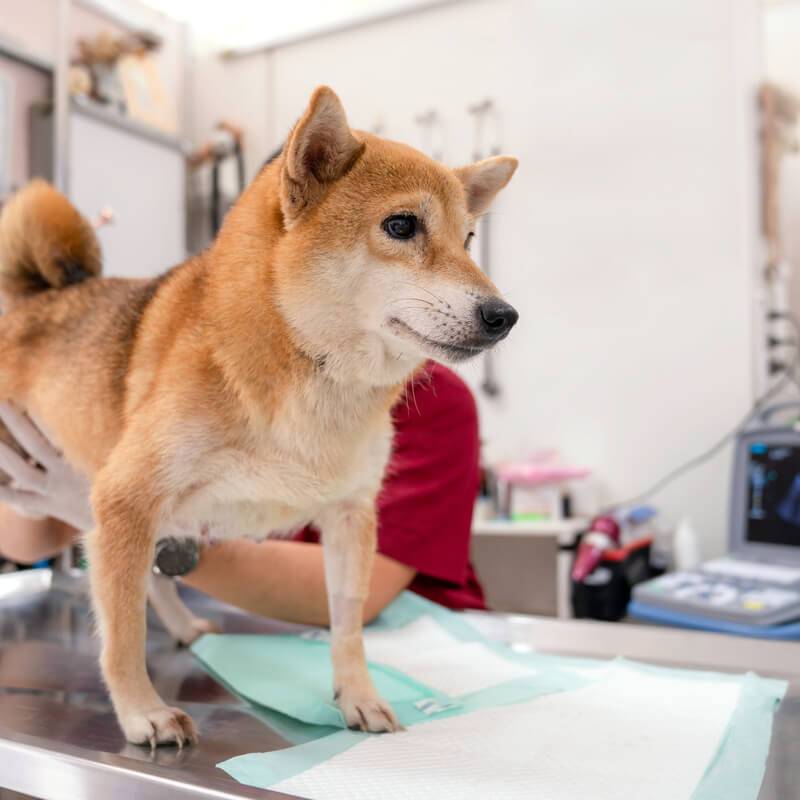
Pros and cons of neutering dogs
The question of castration often arises when the pet is aggressive or hyperactive. Therefore, the owners are primarily interested in: if the dog is castrated, will it be calmer?
Changing the hormonal background, castration affects the behavior of the dog and has its pros and cons:
- Veterinarians and dog handlers believe that it is necessary to castrate a dog if it is aggressive;
- Males become calmer for keeping in an apartment and a house, they stop showing aggression towards other dogs, marking their territory, other dogs that are determined to fight lose interest in them;
- With a decrease in the work of hormones, the libido of the male decreases, interest in bitches disappears, the tendency to shoot disappears, the male becomes more obedient;
- The undoubted benefit of castration in the disappearance of the risk of infection through sexual contact, since sexual contact with other dogs is excluded;
- Castrated males rarely develop prostatic hyperplasia;
- The operation is an important factor in the prevention of oncological diseases of the genitourinary system for males and females.
Castration of bitches has similar advantages: behavior becomes calmer, heat stops going, which is difficult to experience in an apartment or house. Walking with a sterilized dog is safer: it will not run away and get lost, it will not catch infections from sick males.

It’s no secret that spayed or neutered dogs live longer than non-neutered ones. The health of a pet is affected not only by heredity or disease. Stress factors and an unsatisfied sex drive are one of the reasons why a dog’s life can end earlier.
The consequences of castration may contain risks associated with hormonal imbalance. It is not uncommon for dogs to develop hypothyroidism, a disease caused by an underactive thyroid gland. According to statistics, castrated males are more often prone to malignant formations in bone tissues. A lack of male hormone can affect the condition of the coat, which, losing stiffness, becomes softer. A lot of problems bring an increase in appetite after castration, causing obesity in males and females. And obese dogs suffer from diseases of the cardiovascular system more often than others. It should be borne in mind that a spayed bitch of large and giant breeds may develop urinary incontinence, which is expressed in slight leakage, over time after the operation.
One of the important moments of the operation is anesthesia. Not all dogs tolerate it well. During the operation, much depends on the correct calculation of the dosage. With an error in the big direction, there is a risk of cardiac arrest from anesthesia. The issue of castration should be discussed with the veterinarian, weighing all the risk factors.

At what age are dogs castrated?
You can castrate a puppy from a certain age. This is due to many factors. Veterinarians perform an operation to remove the reproductive organs from 7 months to a year and a half. It is necessary to choose a period, since the castration of dogs obliges to take into account the state of health and age. You can not operate on small puppies, but it is also undesirable to delay. When it is better to castrate a dog depends on the breed. For large dogs, castration is carried out later, depending on the first estrus. In small breeds, this period comes earlier. The difference is dictated by the peculiarities of the completion of the formation of the pet’s body. The main requirement for males is the completion of bone formation and a healthy state of the body.
Veterinarians remind that males begin to experience the effects of testosterone early, so after castration, their behavior will change smoothly within six months or a year. Therefore, it is not worth delaying the operation so that unwanted sexual activity is not fixed. But if you rush and castrate too early, the risk of diseases will increase. So, early castration of dogs against the background of active growth of the puppy is fraught with the development of hip dysplasia and osteosarcoma – bone cancer. In addition to severe pathologies, a male with early castration may stop growth and physical development.
Surgery is recommended for bitches for medical reasons either immediately after or before the first estrus, this period can vary in the range of 6-12 months, plus or minus 2-4 months.

Male castration
In veterinary medicine, a method of surgical removal of the testicles is used. In time, the castration of a dog lasts no more than a quarter of an hour, depending on the age and weight of the male.
At the first stage, the pet receives anesthesia and is fixed, and the surgical field is disinfected. At the second stage, a longitudinal incision is made in the scrotum no larger than the diameter of the testis. At the third stage, the testis is removed from the scrotum, a ligature is applied to the spermatic cord to prevent bleeding. The last stage is the excision of the testis and the application of skin sutures to the scrotum. The castration of the dog is completed. The dog is taken out of anesthesia.
Veterinarians practice a cosmetic procedure – amputation of the scrotum, which looks aesthetically more beautiful, but the cost of castration logically increases.
When castrating a male cryptorchid, the operation takes longer, because the undescended testicle is also removed.
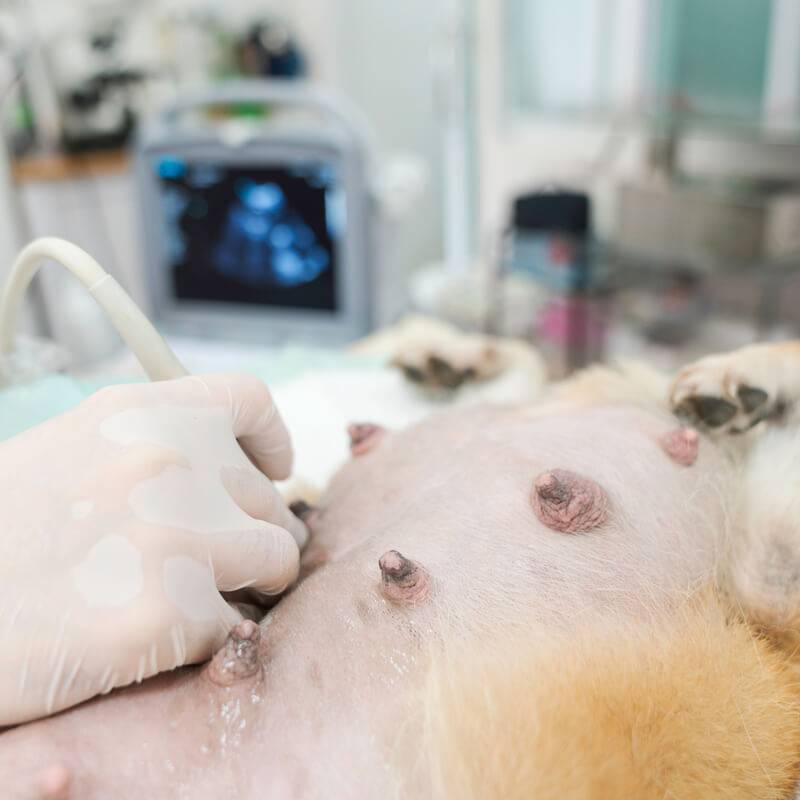
Castration bitches
In modern veterinary medicine, several methods are practiced: amputation of the uterus and ovaries, removal of the ovaries and ligation of the fallopian tubes. The duration of the operation lasts about half an hour and depends on the qualifications of the veterinarian and the condition of the dog. Castration of dogs is an abdominal operation, which is performed under general anesthesia. At the first stage, the bitch receives anesthesia and is fixed, and the surgical field is disinfected. At the second stage, surgical access to the organs is performed. At the third stage, surgical manipulations with the organs and tissues of the dog. The last stage is the layer-by-layer closure of the wound and the application of skin sutures. The bitch is taken out of anesthesia. After the operation, a course of antibiotics is possible. In the postoperative period, the dog wears a special blanket for 3-6 days.
A new, expensive, but gentle way to sterilize bitches requires special equipment – a laparoscope. The main advantages of laparoscopic methods are less blood loss, a quick recovery period and a reduced risk of complications.

Contraindications for castration
Contraindications for surgery in dogs may include:
- Lack of a comprehensive vaccination or a short period after vaccination (less than a month);
- Without specific medical indications: age, dogs under 5 months or older than 6 years are not recommended for surgery;
- Pathology of the kidneys, diseases of the cardiovascular system, in which anesthesia is contraindicated;
- Unsatisfactory clinical condition, impaired appetite, increased body temperature, loss or dull coat color, depression;
- The presence of severe infectious diseases;
- Age during surgery is important: older dogs may have contraindications to surgery, often associated with chronic diseases.
As a rule, no testing is required, but testing can be done at the request of the owner or at the request of a veterinarian in case of a controversial clinical condition. Research can show if castration is dangerous for a dog or if surgery can be done.

Preparing for an operation
Preparation for surgery is an important stage, as well as postoperative therapy. If there is the slightest doubt, it is worth conducting a diagnosis, passing a general blood test, urine and feces, a biochemical blood test, an ultrasound examination of internal organs, to make sure the dog tolerates anesthesia – an ECG of the heart. The veterinarian will conduct an examination, give a conclusion about the possibility of surgery. At least a month in advance, an adult dog must be treated for parasites and dewormed, the passport must contain marks on the necessary vaccinations. Since the puppy is castrated under general anesthesia, it is forbidden to feed the pet on the day of the operation, and it is better to exclude even drinking water for 6 hours.
The mood of the owner is one of the important factors for a successful operation; cheering the dog and being with her is the key to a successful recovery from anesthesia.
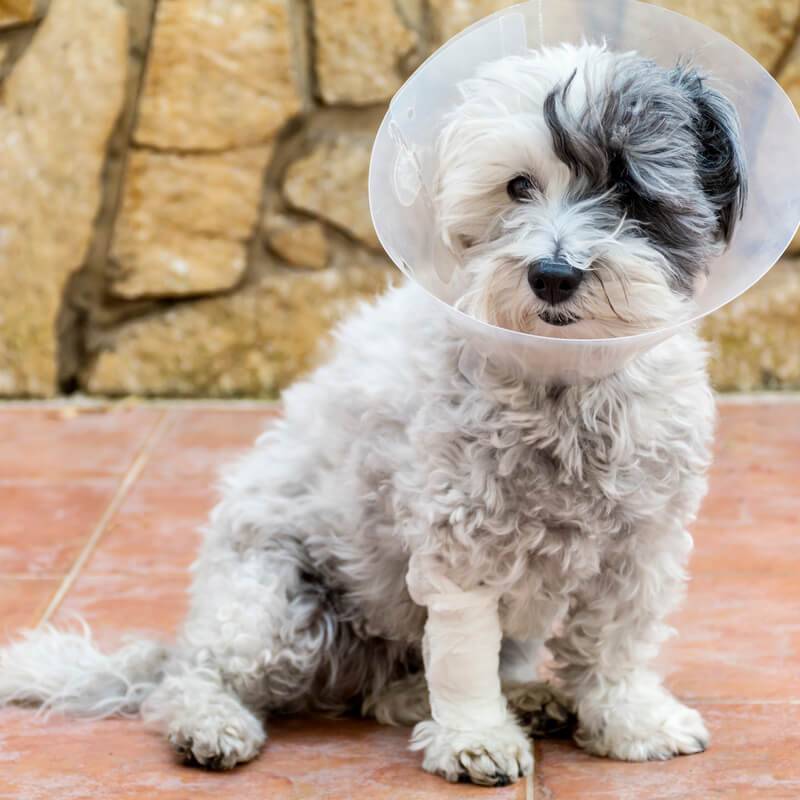
Behavior after castration
If before the castration the dog was active, loved to play, he will remain the same. Behavior after sterilization and castration for the first time, in principle, does not change. But over time, the benefits become clearer. The dog on the paddock stops marking every post and anxiously sniffing every bush. In the character of even a young male, more calmness appears. The adult bitch also becomes more calm, the false pregnancy that is common after estrus disappears. But if, before the operation, the activity of the male was dictated by the search for rivals or a female, then it is worth helping the pet find a new motivation. If there are complex behavioral problems, they cannot be completely eliminated by castration, the help of a dog handler in correcting behavior will be required. The opinion that after the operation a male or a female loses its working qualities or becomes lazy is not true, which is proved by the examples of many working breeds, which continued to perform their functions perfectly after castration. The owner should load the pet with tasks and work. Let this interaction be reduced to playing ball or performing the simplest commands: a dog, especially a sterilized one, needs an active phase of life. Veterinarians agree on one thing: the behavior of a castrated dog improves towards a sharp decrease in aggression towards other dogs.

Postoperative care of a dog after castration
In the absence of complications, as soon as the dog regains consciousness after anesthesia, the patient can be taken home. A neutered dog needs rest and care the most. It is advisable to organize a warm place in advance. When living in an aviary, you need to temporarily take a pet into the house – this reduces the risk of infections. In the first hours after the operation, you can drink a small amount of water, but you can not feed, because it is still difficult to swallow and may vomit. After 4-6 hours, you can offer some food, but a possible lack of appetite during the day should not cause alarm.
It is important to check the condition of the seams. If the bitch licks the wound, you need to wear a protective collar or a special blanket. If suppuration or divergence of the seams is noticed, it is advisable to immediately consult a veterinarian.
After castration, the pet can describe itself, this is normal on the first day after the operation, you can’t scold the pet for this. After about 7-10 days, the dog should be taken to the veterinarian. If ordinary threads were used during castration, then you need to come to remove the stitches.
When the difficult stage has been passed, it is necessary to continue monitoring the pet, it should be provided with a light regimen: do not overload it with walks in cold weather, active games and training.

Chemical castration
Chemical castration is similar in principle to chipping and is performed on dogs of both sexes. Its action is designed to inhibit the reproductive functions of the bitch and suppress the level of testosterone in the male. The method of chemical castration consists in subcutaneous injection – a preparation containing the active substance is injected into the withers. Thus, sexual desire is suppressed for a long time, from six months to three years. After the expiration date or removal of the capsule, sexual functions in dogs are restored. Chemical castration of dogs is convenient and carries fewer risks for males and females than surgery. An important advantage is the reversibility of this procedure.
The article is not a call to action!
For a more detailed study of the problem, we recommend contacting a specialist.
Ask the vet
30 2020 June
Updated: January 13, 2021



